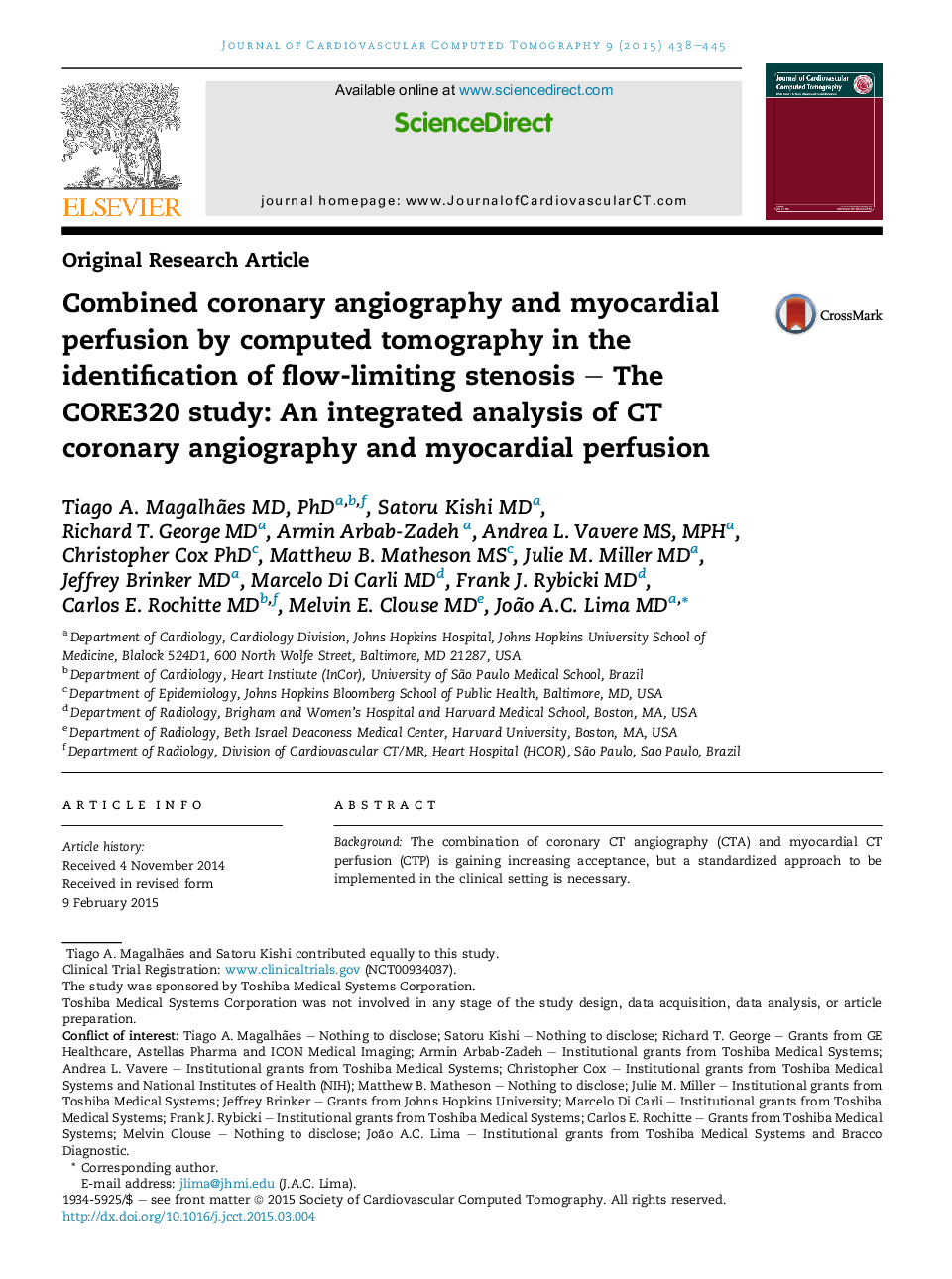| Article ID | Journal | Published Year | Pages | File Type |
|---|---|---|---|---|
| 2964349 | Journal of Cardiovascular Computed Tomography | 2015 | 8 Pages |
•Combined coronary CT angiography and myocardial CT perfusion is gaining acceptance.•Analysis of both methods by the same reader is feasible and superior to CTA alone.•A natural workflow is presented aiming the implementation in the clinical setting.
BackgroundThe combination of coronary CT angiography (CTA) and myocardial CT perfusion (CTP) is gaining increasing acceptance, but a standardized approach to be implemented in the clinical setting is necessary.ObjectivesTo investigate the accuracy of a combined coronary CTA and myocardial CTP comprehensive protocol compared to coronary CTA alone, using a combination of invasive coronary angiography and single photon emission CT as reference.MethodsThree hundred eighty-one patients included in the CORE320 trial were analyzed in this study. Flow-limiting stenosis was defined as the presence of ≥50% stenosis by invasive coronary angiography with a related perfusion defect by single photon emission CT. The combined CTA + CTP definition of disease was the presence of a ≥50% stenosis with a related perfusion defect. All data sets were analyzed by 2 experienced readers, aligning anatomic findings by CTA with perfusion defects by CTP.ResultsMean patient age was 62 ± 6 years (66% male), 27% with prior history of myocardial infarction. In a per-patient analysis, sensitivity for CTA alone was 93%, specificity was 54%, positive predictive value was 55%, negative predictive value was 93%, and overall accuracy was 69%. After combining CTA and CTP, sensitivity was 78%, specificity was 73%, negative predictive value was 64%, positive predictive value was 0.85%, and overall accuracy was 75%. In a per-vessel analysis, overall accuracy of CTA alone was 73% compared to 79% for the combination of CTA and CTP (P < .0001 for difference).ConclusionsCombining coronary CTA and myocardial CTP findings through a comprehensive protocol is feasible. Although sensitivity is lower, specificity and overall accuracy are higher than assessment by coronary CTA when compared against a reference standard of stenosis with an associated perfusion defect.
